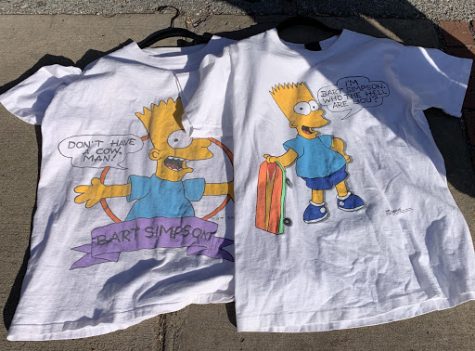With the safety of in-person shopping and clothing stores up in the air for the next few months, sellers are scraping for new ways to stay afloat, and buyers are seeking a respite from online shopping. The Collective Vintage, a curated vintage clothing store, is leading this innovative group in Music City.
Located on the corner of 21st and Belcourt, their pop-up vintage t-shirt store allows shoppers the safety of the outdoors and the unique thrill of thrifting combined every Saturday from 9 a.m. to 6 p.m.
According to sellers Matt Wygant and Carter Stevens, The Collective’s pop-up vintage is a collaboration between multiple vintage clothing sellers that started about a year ago. Each tent belongs to an individual seller, but all the sellers trade and source together given the communal nature between local thrift stores, Stevens said. Looking at others’ finds was how he found a niche early in his career and most thrifters gain inspiration from each other. Stevens would “watch videos of what others were finding” online to see where to go and what to grab.

In addition to the local thrifting scene, online communities are prevalent through websites and apps such as eBay, Etsy and Depop. According to Stevens, there has been a noticeable increase in online traffic since the beginning of the pandemic. He attributes exclusivity of items, a (somewhat) affordable price range and the sustainable nature of thrifting as motivations that have fostered new excitement in the thrifting scene. This added traffic, in combination with recent pop culture moments, have transformed the typically underground nature of thrifting.
“It’s pop culture people,” Wygant said. “People like Travis Scott will wear a vintage shirt and post a picture on Instagram, and immediately that shirt will skyrocket to 500 bucks when originally it’s a 20 dollar shirt.”
Sellers and buyers are constantly outbidding each other online into the thousands of dollars for a t-shirt that may have sold for a fraction of the original price. Wygant pulled some vintage Bart Simpson shirts, a Batman themed racing tee and a 1990 Grateful Band tee which, if sold as a collection, could fetch thousands of dollars in certain online bubbles, he said.
The conversation surrounding the gentrification of the thrifting market as a reaction to sales similar to those mentioned above is one heard often and loudly in the thrifting community, Wygant said.
“I see it as I’m running a business,” Wygant said. “You know what you’re looking at, and you know what it’s worth. And if it’s worth something to you and it isn’t to someone else, well that’s just the way it goes.”
Relying on Goodwill and local thrift stores, often the nexus of gentrification conversations, is not a preferred way of sourcing, according to Wygant and Stevens. Many vendors depend on these locations, but they’ve become packed with bored teens throughout the pandemic, creating an unsafe environment. Instead, the pair look to shops that do buyout deals, shipping bulk loads overseas at cheap prices, estate sales and garage sales as alternatives more suited for their selling purposes, Stevens said.
In terms of environmentalism, it is essential that The Collective members are ethical and using sustainable practices, Wygant said. The fast fashion industry’s waste and damage to the environment often acts as the driving force for people to turn to thrifting.
“It shouldn’t be a trend to be ethical, it shouldn’t be a trend to want to act upon the problems in the world right now,” Wygant said. “If I can find something recycled and make something out of that, that’s what’s important to me.”

Wygant has numerous tips for those focused on finding exclusive pieces. He focuses on stitching, tags and if the piece was made in the United States (as the latter usually indicates an older piece). Wygant also suggested getting acquainted with dates of shows, movies, events and sports to understand if the shirts are genuine or masquerading as a lowly reprint.
But ultimately, the relationships Wygant has built with fellow community members as well as global clients has been the most rewarding and beneficial aspect to boosting his collection, he said.
“[Selling thrifted pieces] is nice because you bridge that gap across older generations with our connection over these common interests and items,” Wygant said.









